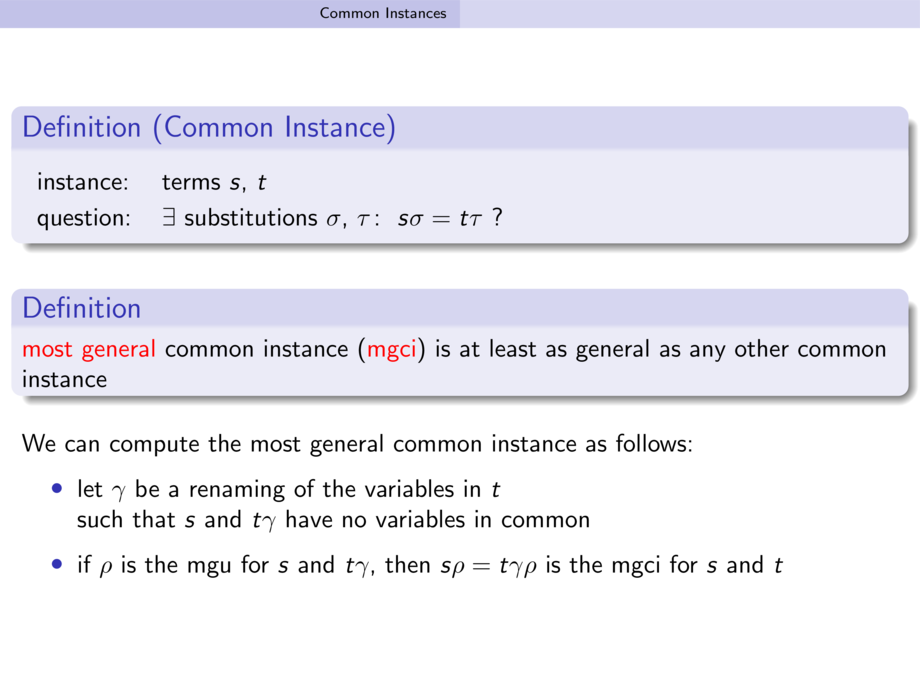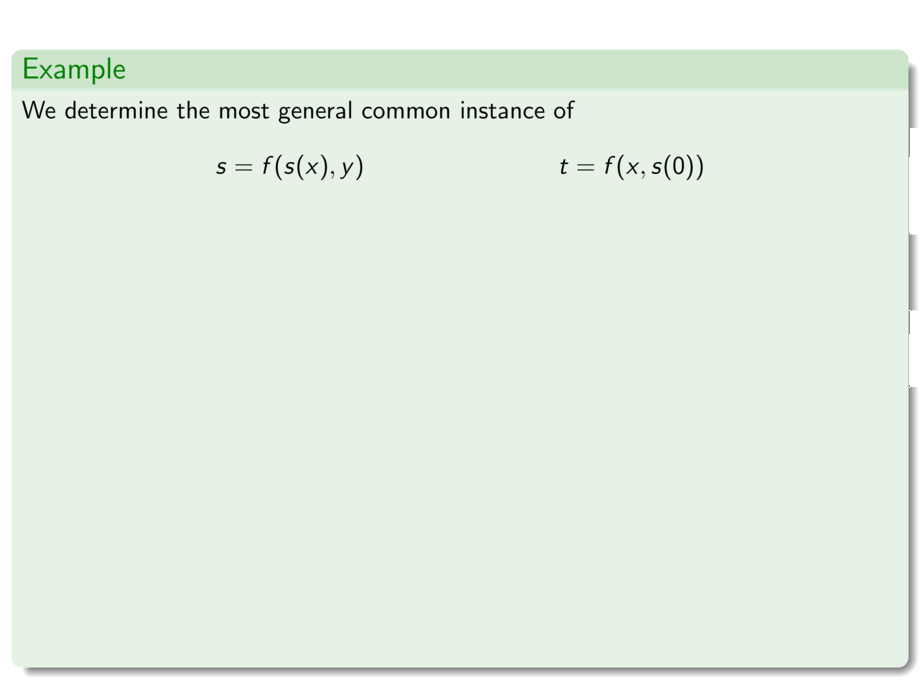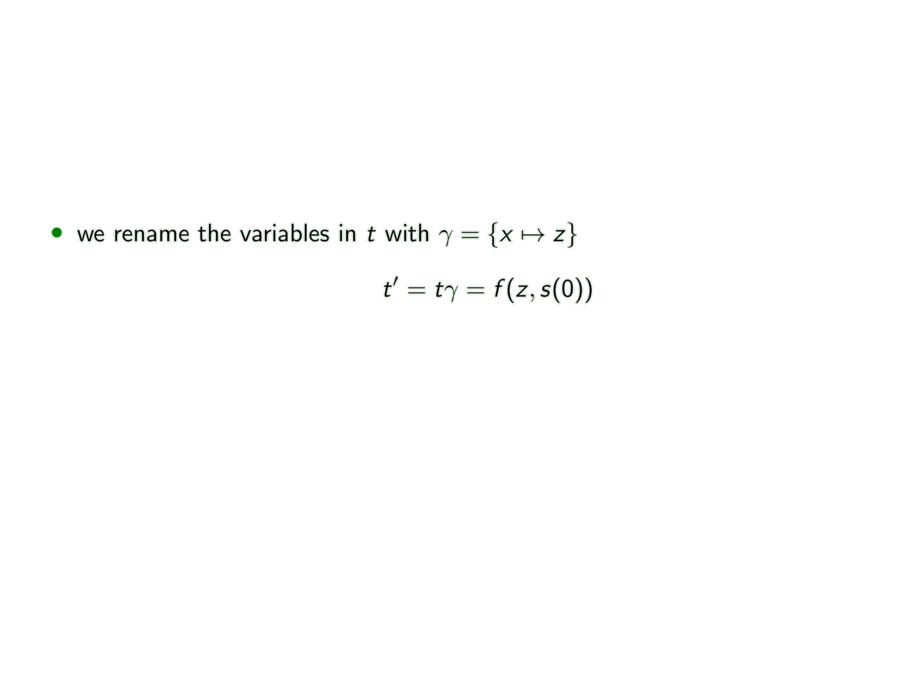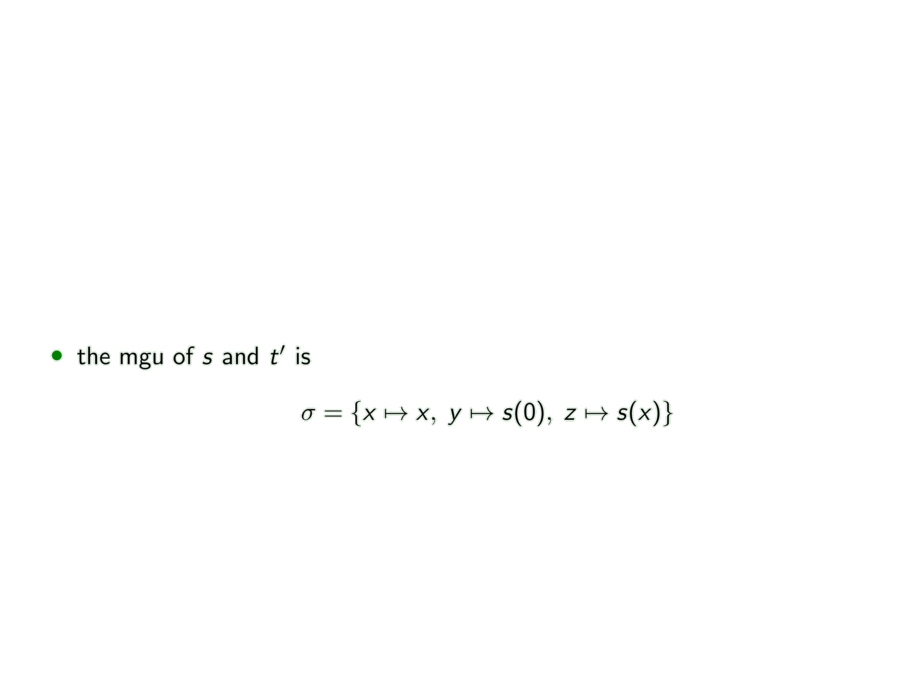



































































































71/73
\begin{frame}
\small
\begin{example}
We determine the most general common instance of
\begin{align*}
s &= f(s(x),y) & t &= f(x,s(0))
\end{align*}
\vspace{-3ex}
\begin{itemize}
\pause
\item we rename the variables in $t$ with $\gamma = \{x \mapsto z\}$
\begin{align*}
t' = t\gamma = f(z,s(0))
\end{align*}
\vspace{-3ex}
\pause
\item the mgu of $s$ and $t'$ is
\begin{align*}
\sigma = \{x \mapsto x,\; y \mapsto s(0),\; z \mapsto s(x)\}
\end{align*}
\end{itemize}
\pause
Hence the mgci of $s$ and $t$ is
\begin{align*}
f(s(x),s(0))
\end{align*}
\pause
That is, $s\sigma = t(\gamma\sigma)$, or:
\begin{align*}
s[x \mapsto x,\;y \mapsto s(x)] = t[x \mapsto s(x)]
\end{align*}
\end{example}
\end{frame}

